Cruising Down the River
The idea and image of Santa Claus came from Germany, nutcrackers came from Germany, and snow globes came from Austria. Almost every major town or city in Germany and many in Austria have Christmas markets. Add the snow, cold temperatures, and warm Gluhwein, and you have the perfect recipe for a memorable holiday season!
Cruise Packing List
There is no limit on the number of suitcases or weight of those suitcases you can take on cruises. You are only limited by the airlines and by what you can manage. When you arrive at the cruise terminal, you drop off your tagged bags with a porter, slip him a few bucks, and say goodbye to your bags until late afternoon/early evening. Pack whatever you will need for that first few hours in your carry-on. I recommend a swimsuit, a change of clothes, and whatever toiletries you will need to shower or freshen up for dinner.
In addition to the usual items you pack for vacation, I find a few items essential for cruising.
Basics
Before you leave for your cruise, you will need to print out luggage tags. To prevent losing them and possibly being parted with your bags for an extended period of time, I recommend luggage tag holders.
Samsonite is a consistently popular and durable luggage brand. If you are interested in hard-sided suitcases, check these out. I am a recent convert to packing cubes and highly recommend using them! They make keeping your suitcases organized a breeze, and unpacking has never been so easy! I like these because they are small and color-coded.
I never leave home without my water bottle, and I love my iron flask! Just make sure it is empty before trying to get through TSA pre-check. I also like this holder for my water bottle. It holds my cell phone, sea pass card, and a few other small items and is perfect for running around the ship and hanging out by the pool.
It is so important to stay hydrated, and that can be a challenge on cruises, with the sun and free-flowing alcohol! These electrolyte packs help with that.
If you are traveling with a group, magnetic whiteboards for your door can be fun and useful.
Storage
Many of the walls of your cabin are metal and storage space is limited! I recommend these small magnetic hooks and these larger magnetic hooks to maximize your space. I always take an over-the-door organizer to store toiletries, sunscreen, flip-flops, and other similar items. A hanging toiletry bag is essential, as those bathrooms are tiny!
Outlets are notoriously few, and power strips are not allowed. These plug extenders are perfect! To organize dirty laundry, we take this pop-up hamper.
Motion Sickness
I never cruise without these motion sickness pressure point wristbands. They really help with mild motion sickness and don’t cause the drowsiness many medications do. For more severe cases, I always take scopolamine patches, which require a prescription, and Bonine. I never travel without ginger chews! They are great for nausea of any cause.
Planning Phase
We have a travel agent we use for cruises. There is much discussion over whether or not to use travel agents for cruises, and I used to book our cruises myself. However, several years ago, we found John Barbian and have used him ever since. He facilitates the whole process, sits on hold with the cruise lines if that is necessary, and can sometimes find deals that us lowly civilians cannot! He also helps us choose our stateroom- location is important to us.
We wanted to do a river cruise in Europe with our friends, Annetta and Jeremy, and Christmas seemed the perfect time! John helped us choose Scenic Cruises, as they were the most accommodating for folks with mobility issues. They had a deal at the time of our booking in 2018 which included international airfare. We ended up paying around $8600 for the cabin, which included airfare from our hometown and was all inclusive of drinks, excursions, butler service, and airport transfers.
Our itinerary for the Danube Christmas Markets cruise took us to four countries. Cities we visited included: Nuremberg, Germany; Regensburg, Germany; Salzburg, Austria; Cesky Krumlov, Czech Republic; Durnstein, Austria; Melk, Austria; Vienna, Austria; and Budapest, Hungary.
Arrival
When we cruise, we always arrive at least one day early. Between flight delays and jet lag, it just makes sense. We flew into Munich, Germany, and spent one night at the Hilton Munich City. We arrived early in the morning and were unable to check in but, thanks to Jeremy’s diamond status, we were able to recharge over breakfast in the lounge.
This hotel has a great location for exploring Munich, as it is located directly above the S-bahn station Rosenheimer Platz. Trains in Germany are very easy to use and very punctual. The S-Bahn and U-bahn are the major train systems in and around the cities, and there are high-speed and regional trains between cities (ICE, IC, EC). You can buy your tickets ahead of time or at the station. For longer trips on the high-speed trains, I prefer to book ahead of time.
For navigating around cities, buying a single trip, single-day, or multi-day pass at the station is very easy. Use your credit card at the kiosk. You can receive the tickets digitally on your smartphone or have it printed out. For a comprehensive review of train travel in Germany, check out this awesome article.
Munich
We disembarked the train at Marienplatz, the old city center. Here, we visited the Residence, which was the seat of government and home to rulers for hundreds of years. The rooms and halls were grand and ornately decorated, and many contained works of art from the Renaissance all the way up to the Neoclassical period.
We were pretty tired, as we had flown all night and slept a little. In desperate need of replenishment, we found the original Hofbrauhaus for lunch. This place is pretty massive, so seating without a reservation is not a problem. The restaurant and its decor were very reminiscent of Oktoberfest, with its wooden picnic tables and waitresses in dirndls.
Vuong and I shared a suckling pig, while Annetta had the chicken and Jeremy brats. Our beers arrived in giant glass steins like Oktoberfest. The food was delicious!
After coffee, we found the gray line tour bus and hopped on for passive absorption of a little information in our exhausted state. We often do the gray line, big red bus, or (if we are well-rested) a walking tour of a city when we first arrive, just to get oriented and figure out the layout of the town. In this case, we were all dozing off, so Annetta and Jeremy headed back to the room. We soon followed, after checking out the Deutsches Museum. This is a vast science and technology museum, with permanent and temporary exhibits. Definitely worth a visit!
Munich Christmas Markets
Vuong and I took the train to Thereseinweise for a massive Christmas market and a cultural fair called the Tollwood Winter Festival, on the Oktoberfest grounds. This felt more like a music festival (minus the music), with projected Christmas images, glowing icicles, dangling orbs, and circus tents. There were innumerable stalls with crafts and foods, and throngs of people milling about. Such a festive atmosphere!
Gluhwein is a mulled, spiced wine served warm or hot in mugs around Christmas. It is made from red wine (usually) and spices including cinnamon, nutmeg, allspice, and cloves. Each region or town has a special little mug, some of which were boot-shaped. Not a huge fan. But it was everywhere! We had bratwurst, currywurst, and a chimney cake. If you don’t know what a chimney cake is, check out these Pinterest images. Decadent!
We took the train back to the hotel and walked to a Christmas Market nearby. This felt far more Christmassy, with stalls dressed up as tiny alpine lodges. Smells of roasting nuts, bread, and sweet things permeated the air. This is one of the original and most favored markets in Munich, http://www.haidhauser-weihnachtsmarkt.de/ and we highly recommend it! There are many other choices which you can read about here.
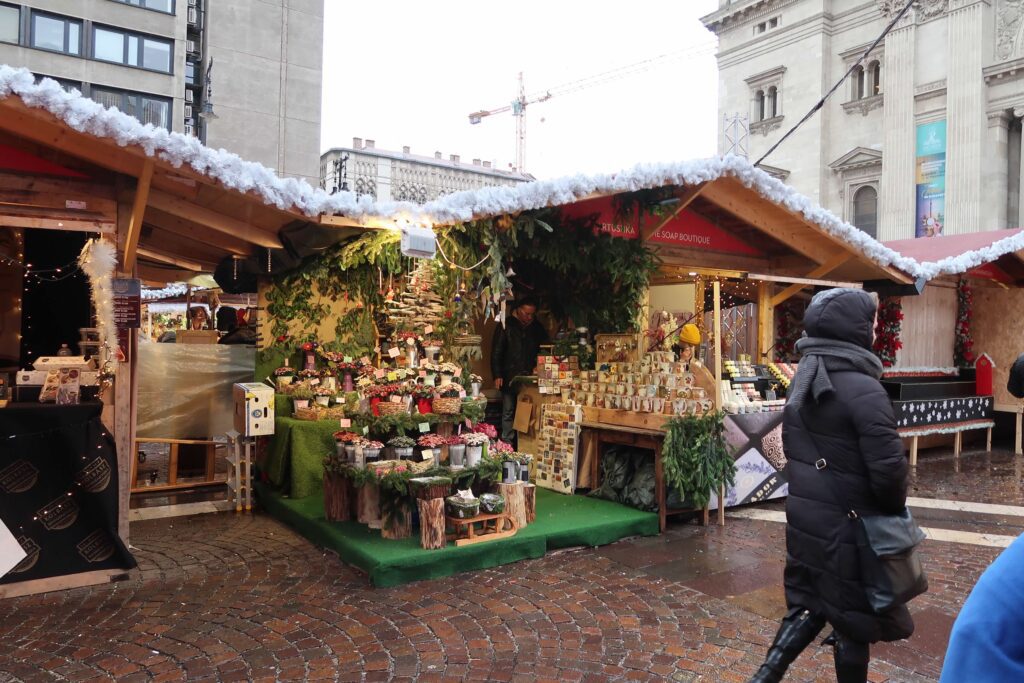


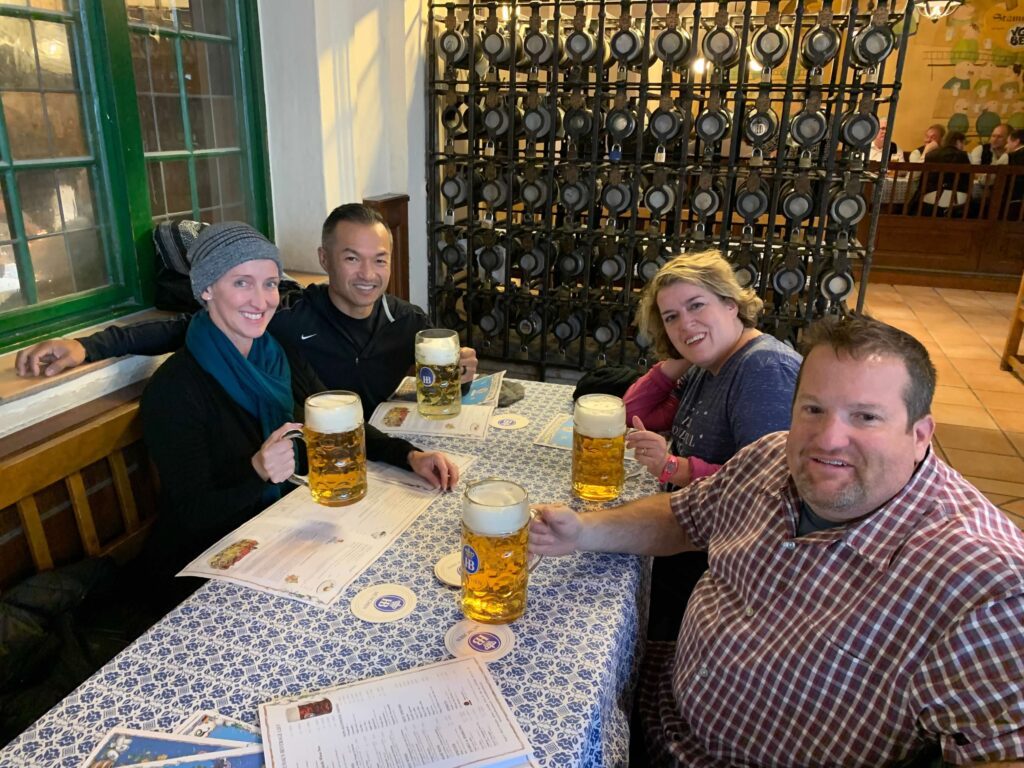
Getting to the Cruise Ship
We took an Uber back to the airport to meet our fellow cruisers and pick up transportation to Nuremberg. The Munich Airport had its own Christmas Market, complete with an ice skating rink!
We made a few friends at the cafe as we waited for our driver, then boarded our chartered bus for the 2-hour journey through Bavaria to Nuremberg. The drive was beautiful, through the bucolic countryside and directly to our ship.
From the outside, our ship reminded me of a giant, squashed RV. The inside was very elegant, with a black-and-white color scheme and sparkling white marble everywhere. The furnishings were mid-century modern. There were four decks and an elevator which made navigating the ship a breeze for Annetta, and our rooms were close to it on the diamond deck.
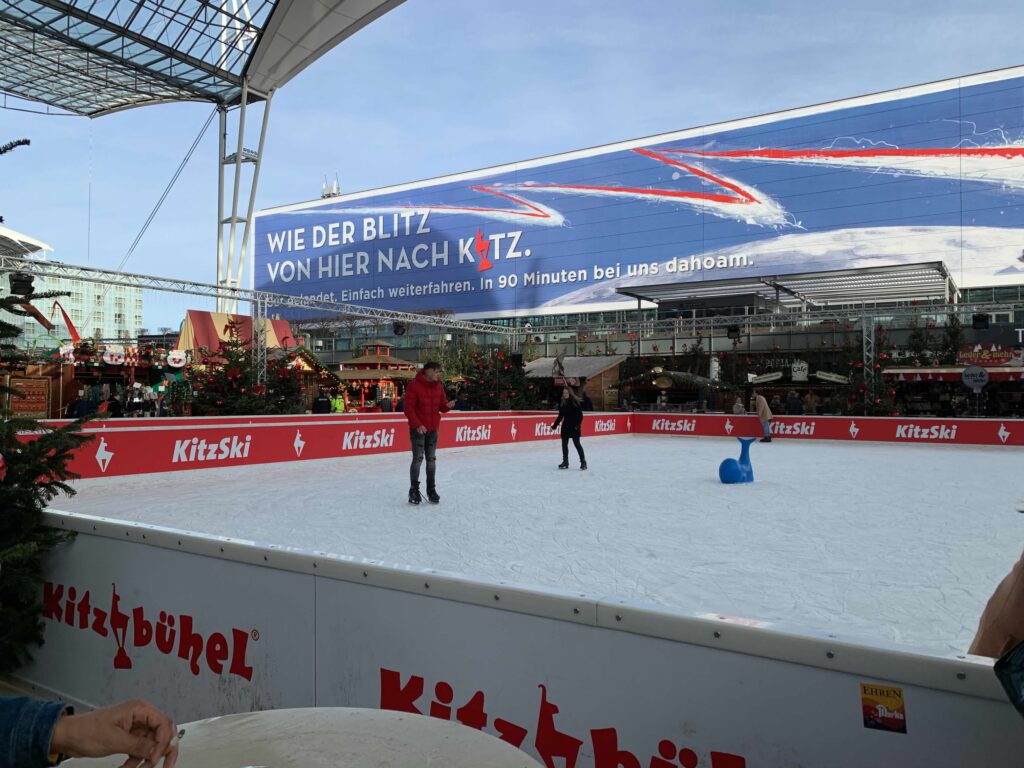
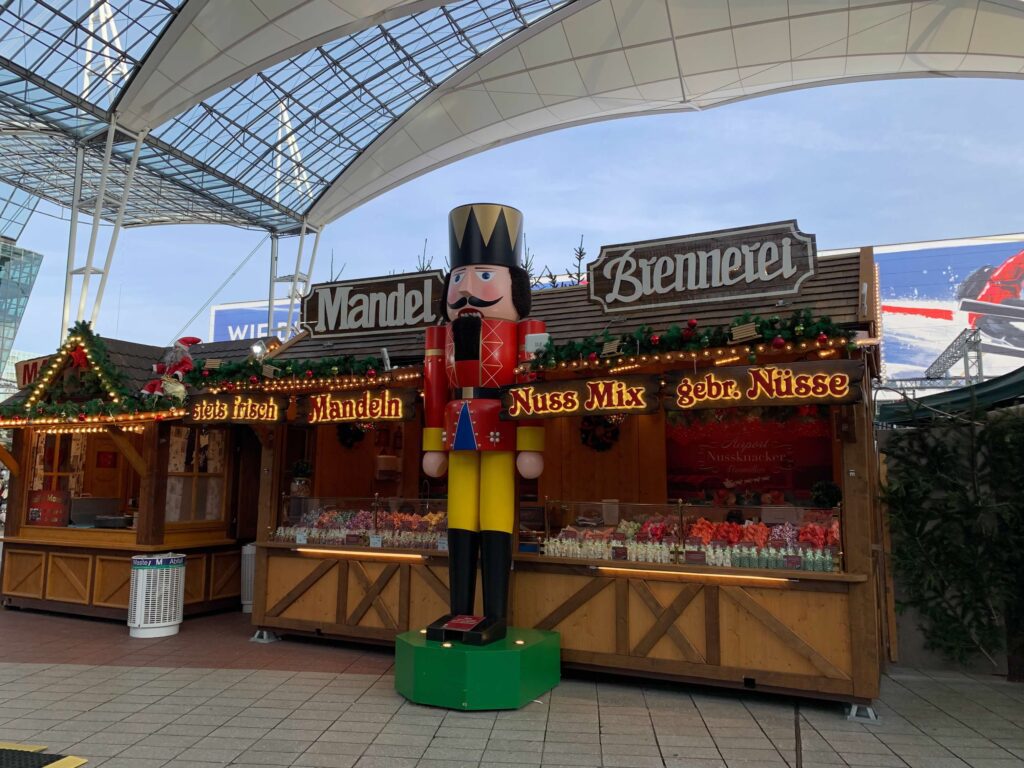

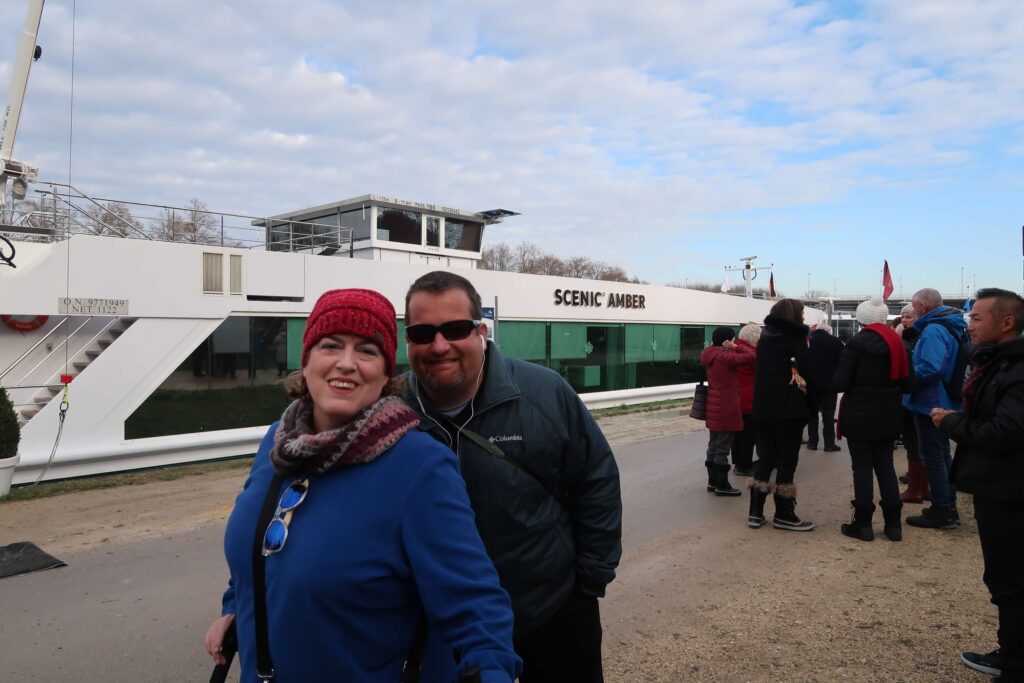
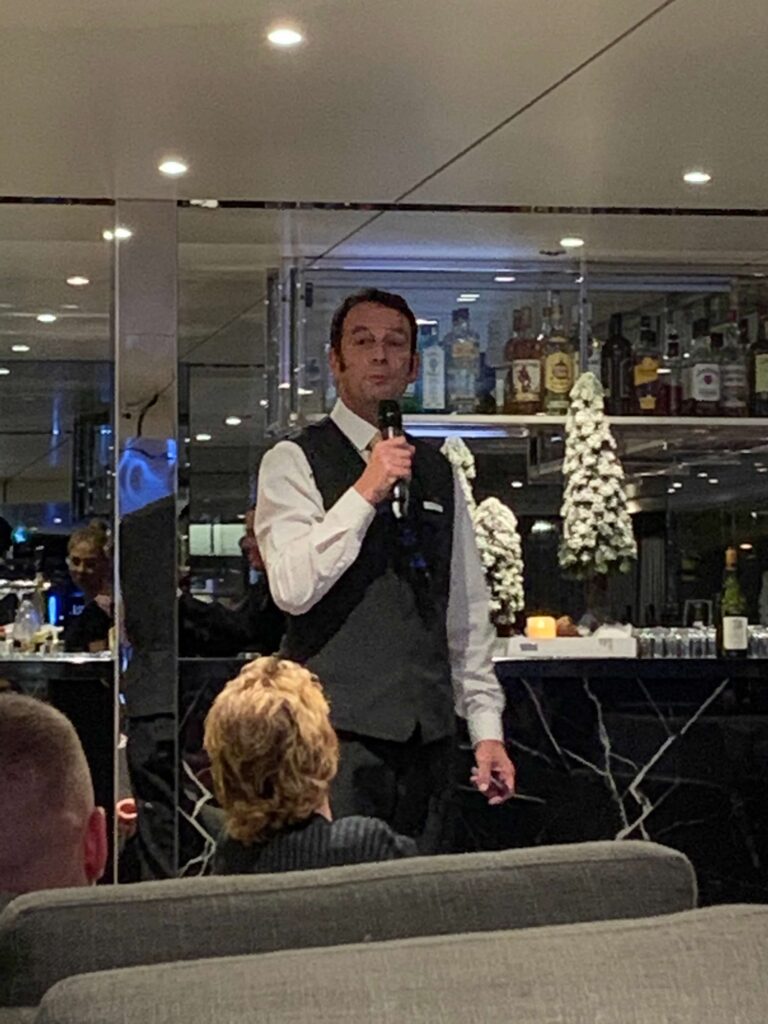
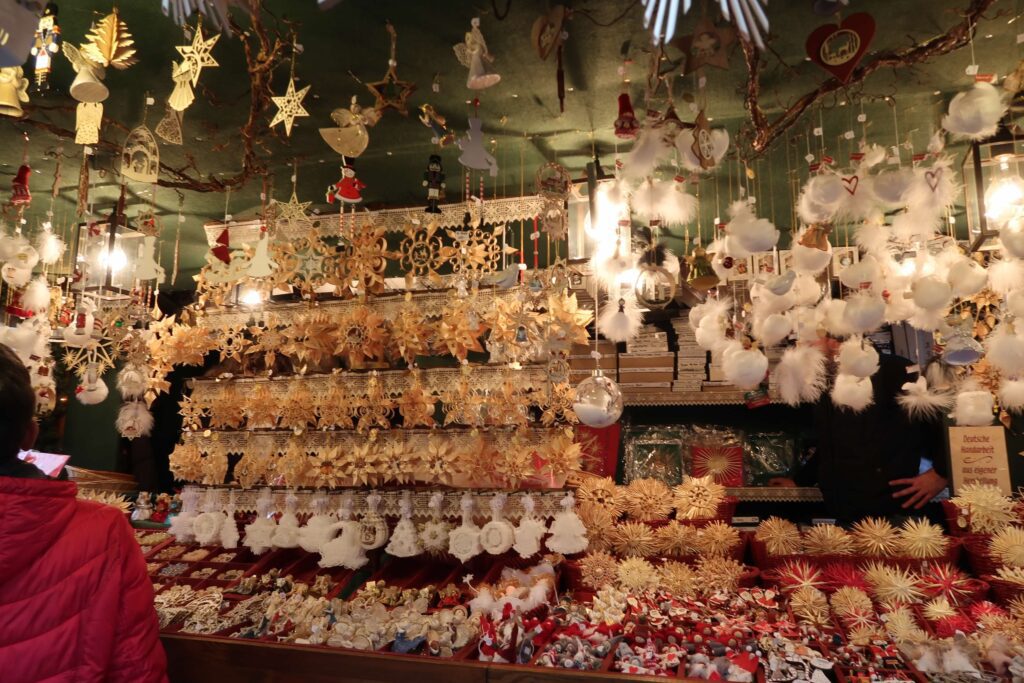
Onboard the Scenic Amber
The ship was small and manageable, with 163 guests and a 1:3 ratio of staff to guests. The heart of the ship was a lounge, where we received daily briefings on the next day’s activities and chatted with fellow travelers. There was a gym, a spa, a salt room, and a formal dining room.
The staterooms were small but well-outfitted, with adjustable beds and well-thought-out storage. The bathrooms were large (for cruise ship bathrooms) and elegant. The small balconies were unique, with floor-to-ceiling windows that could be opened, and a glass partition that could also be opened, to enlarge the room and bring the balcony indoors on cool days. Butler service came standard with all the rooms, and our butler was very attentive.
Everything was included in the fare, so the snacks and mini-bar were guilt-free, and even top-shelf spirits were a part of the deal! The staff waited on us hand and foot, and anticipated our every desire! Richard, our cruise director, was hilarious and super helpful, warning us off of “cobbly cobbly cobbly” tours that could be difficult to navigate. He even brought out his corny alter ego, Cousin Otto, for a polka or two.
We were among the younger passengers, but even the older folks were fun and lively. We enjoyed hearing their travel stories and getting to know them.
Evenings began with cocktails in the lounge as we caught up with our fellow travelers. After a multi-course gourmet dinner, Richard and his crew provided entertainment related to our ports of call and briefings on the next day’s excursions.
Breakfast each day was an extensive buffet of European and American dishes. Something for everyone!
Nuremberg
We spent the first night on the ship in port in Nuremberg, then explored the city with a group tour organized by Scenic. It was a somber day, but part of travel is learning about history. And history ain’t always pretty. We visited the Documentation Center, where we learned about the rise of the German Workers’ Party (which morphed into the Nazi Party), and the rallies leading up to the Third Reich. We walked in Hitler’s footsteps and stood on the platform at the end of the Zeppelin field, from which he spewed his propaganda to thousands (up to 500,000) of young men looking for purpose. The Nazi party was born here, and it was here that Hitler convened the Reichstag and instituted the Nuremberg laws revoking Jewish citizenship.
After the war, Nazi officials were tried and convicted of war crimes here, and many were subsequently executed. While this visit was dry and somber, I highly recommend visiting it while you are in Munich, to gain a greater understanding of how Hitler came to power and millions fell prey to his BS and found justification for their monstrous actions. https://museums.nuernberg.de/documentation-center/
History
The Germans talk about their history a lot, so that they never forget and never repeat the mistakes of the past. They take this very seriously, and you can be arrested for even jokingly doing a Heil Hitler. That is not funny. They do give little jabs to the memory of the fuhrer. For example, he was an adamant vegetarian, so a Burger King was placed in the old Nazi barracks. He hated immigrants and races other than his, so an Immigration Center was also placed in the barracks.
The marginalization of other people started with political opponents and progressed to people of different sexual orientations, and then to other ethnic groups. He painted these groups as “other” and blamed them for all of society’s problems. Eventually, dehumanization paved the way for the Holocaust. We think this could never happen again, but I have my concerns… The first people sent to concentration camps and imprisoned without trial were his political opponents. He started by suppressing opposing views and delegitimizing the media. Sound familiar?
Nuremberg and the birth of the Nazi Party
Below, you see the Zeppelin Field where the Nuremberg rallies were held, the dais from which Hitler spoke, and the color coding system for the early concentration camps. Prisoners would receive badges in colors based on which group they fit into- red for political opponents, pink for homosexual men, green for criminals, blue for immigrants and migrant workers, purple for Jehovah’s Witnesses and other religious groups Hitler didn’t like, black for disabled people or people with issues that prevented them from being fully functioning members of society. Yellow triangles were for Jewish people, and add a yellow triangle to any of the above if the offender was Jewish. It is complicated- if you want to go deeper, check out this Wikipedia page.
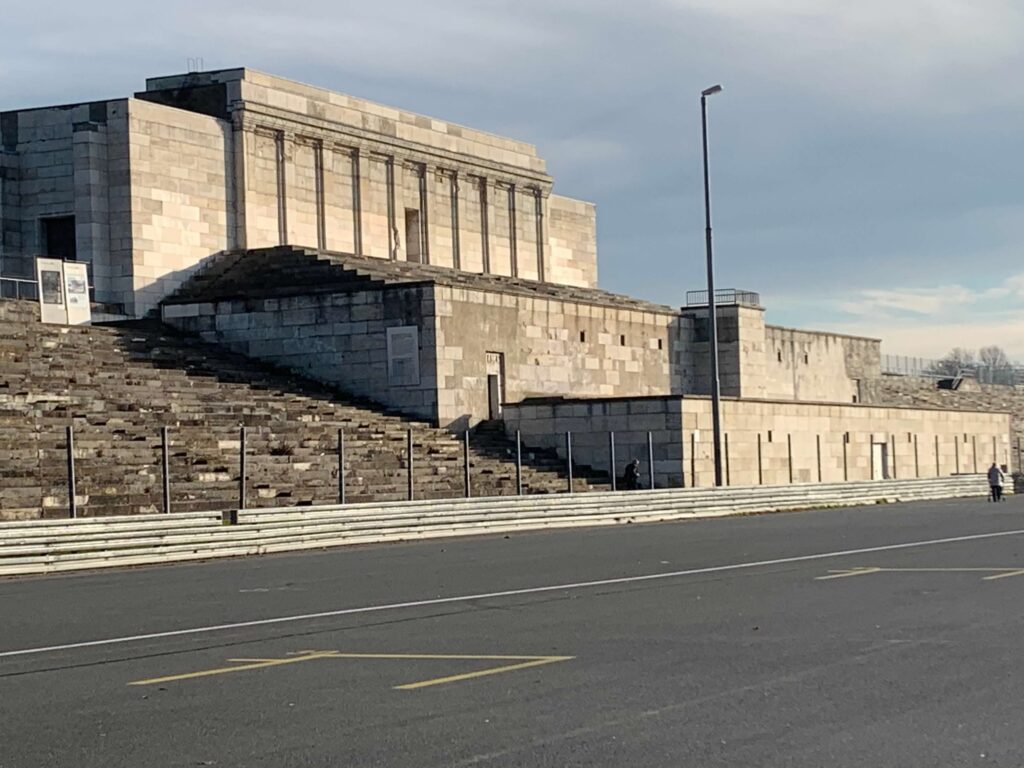
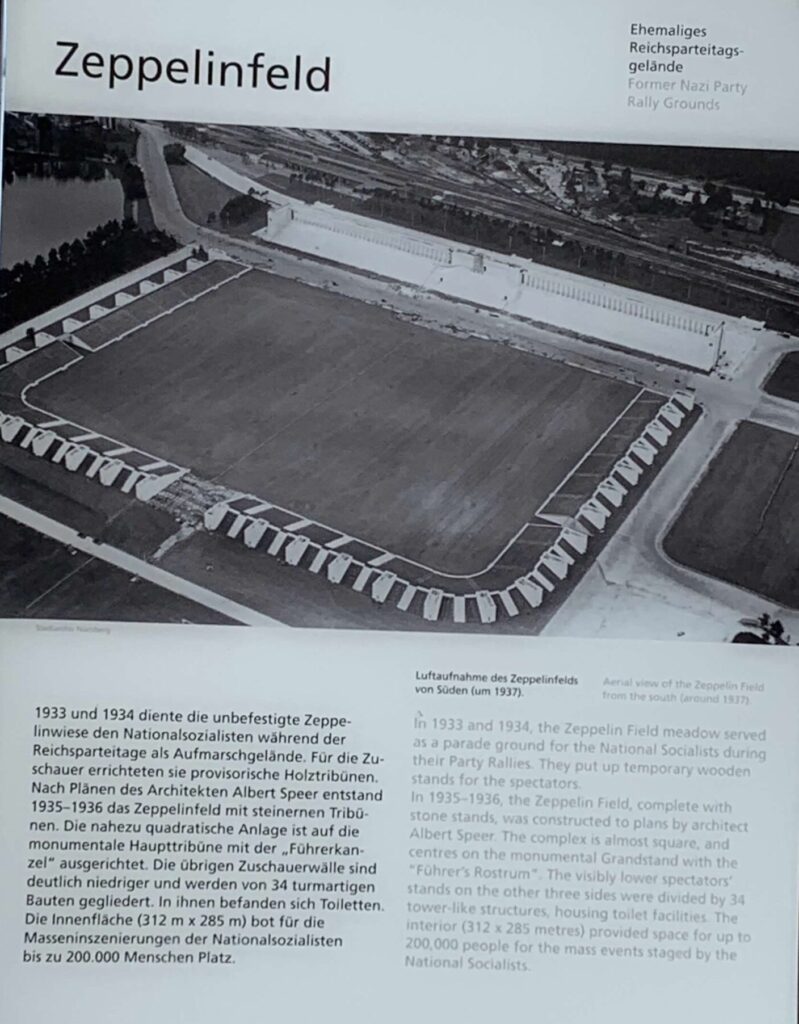
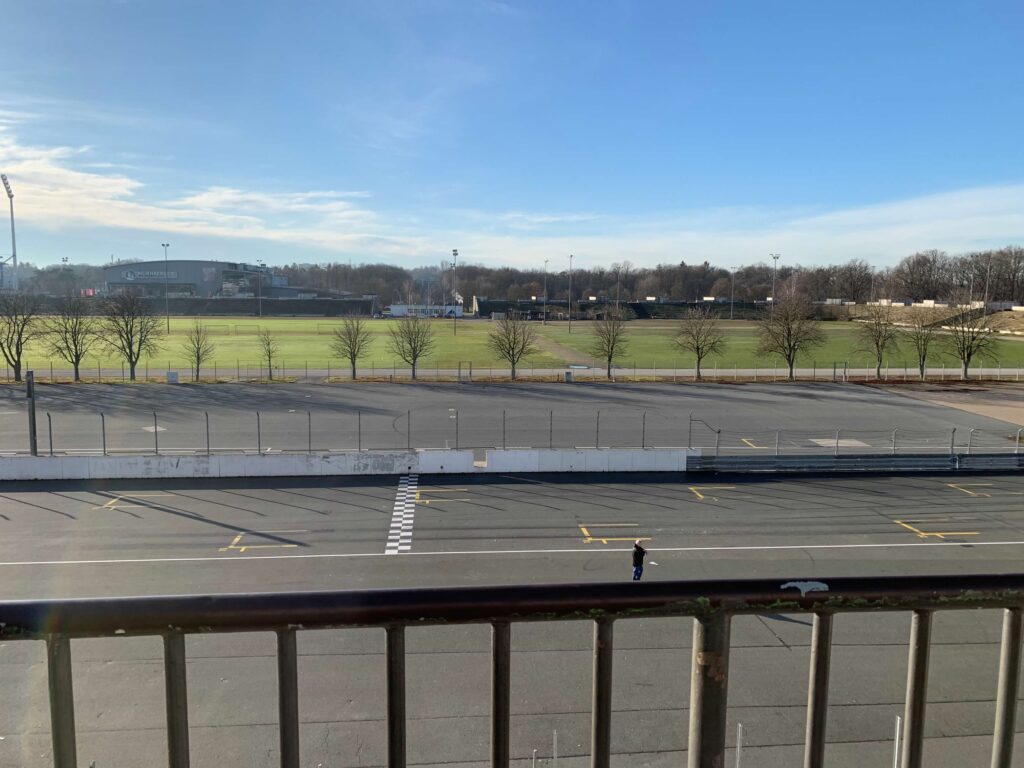
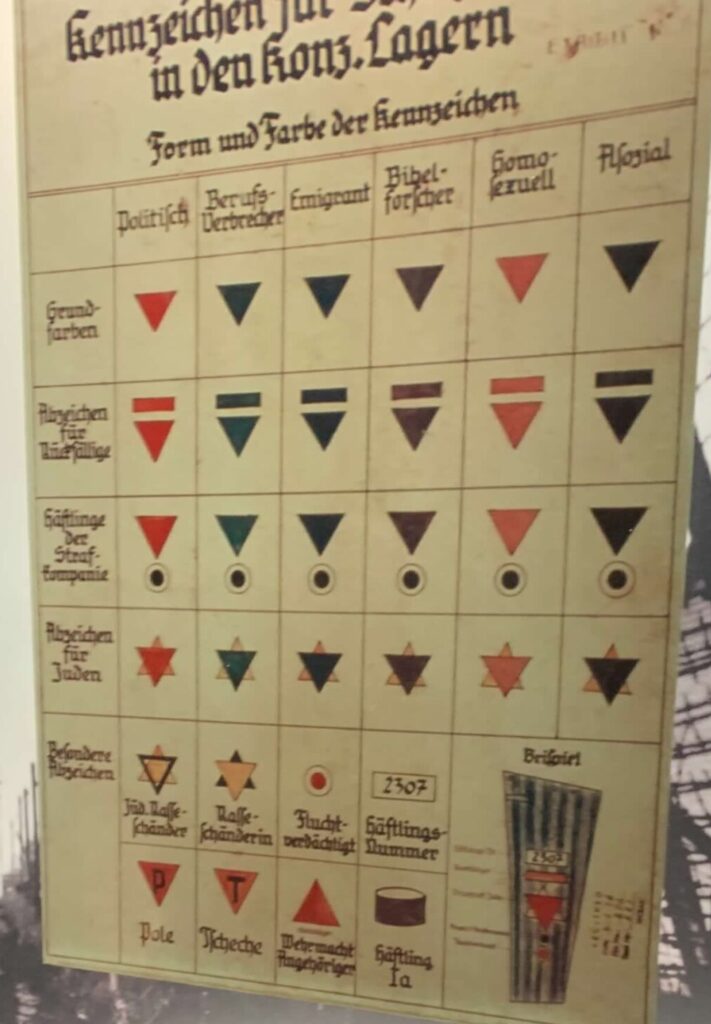
Regensburg
Regensburg is an important port city along the Danube and is notable for the number of medieval buildings that survived WWII. At the time of our visit, a humongous Christmas market transformed the town square. We bought Christmas ornaments and enjoyed brats and Dampfnudeln, sweet German dumplings with vanilla sauce.

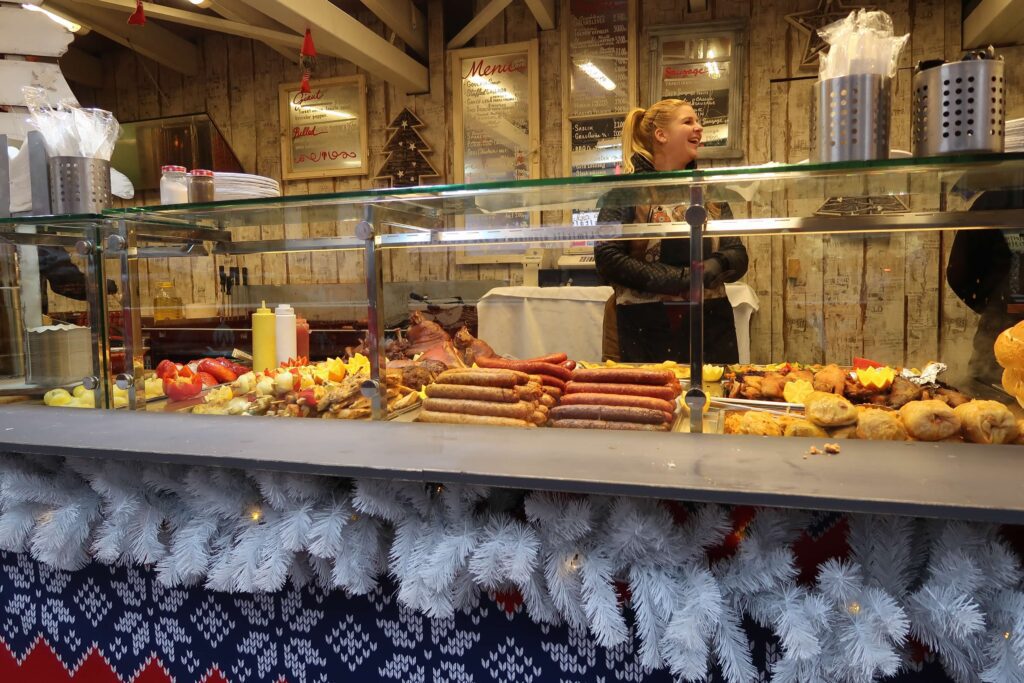
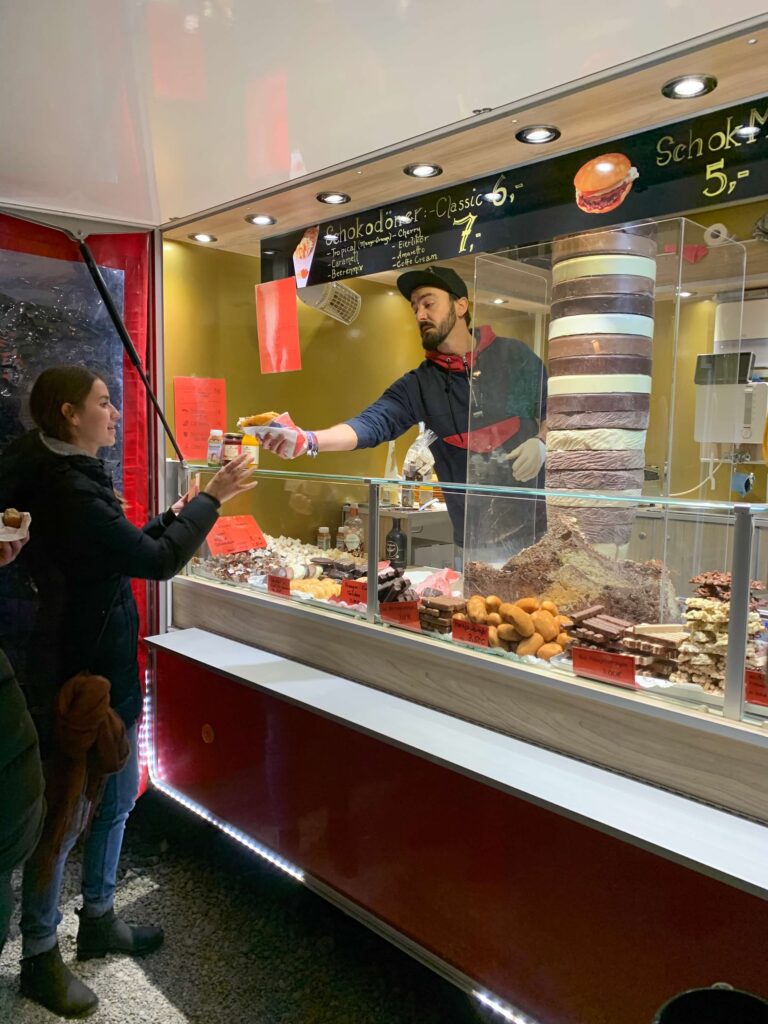
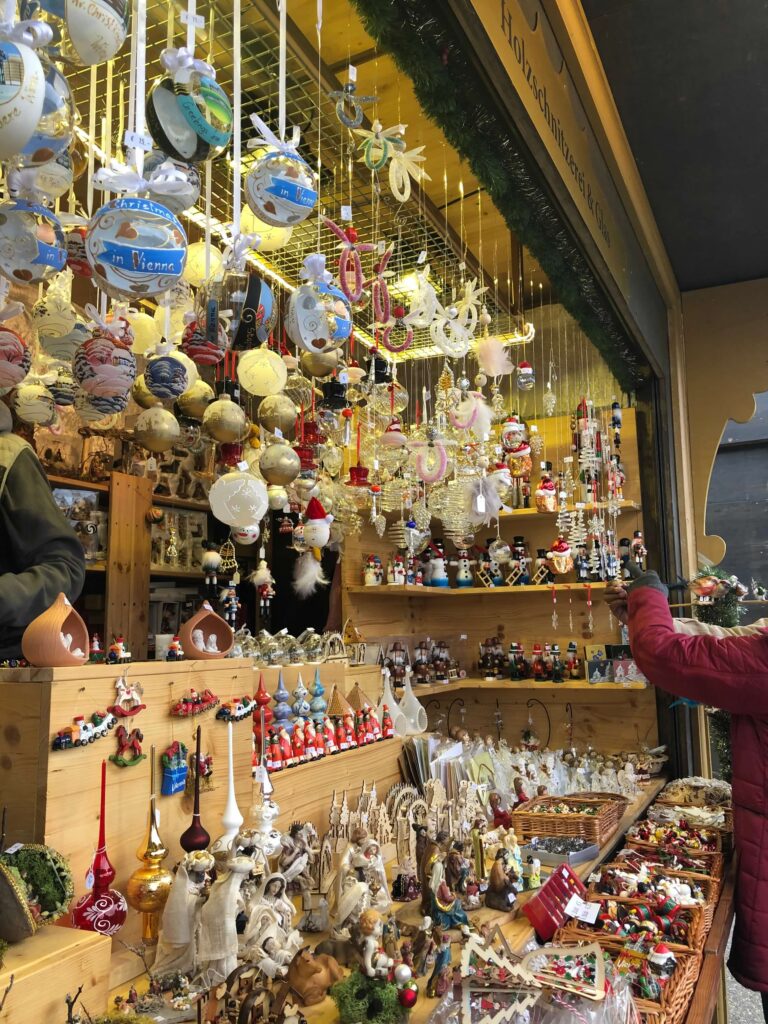

Passau, Salzberg, and Cesky Krumlov
We docked in Passau, where you could visit Passau, Salzburg, or Czechia. Jeremy, Vuong, and I took a coach to the Czech Republic, where we spent half a day in Cesky Krumlov. As this village was “cobbly, cobbly, cobbly,” Annetta stayed onboard for a stunningly scenic cruise from Passau to Linz, Austria, where we were to meet up that evening.
The coach ride was spectacular, taking us through snow-covered mountains of the Bavarian and Bohemian ranges. The village of Cesky Krumlov was very charming and had as its centerpiece the Český Krumlov Castle. The Rosenberg family built this massive complex of over 40 buildings. Most interesting was the legend of the Vampire Princess, Eleonore zu Schwarzenberg. Villagers buried her in a steel vault so she could not escape if she rose from the dead.
Some of the exterior of the castle was painted in the style of “Illusionism,” in which the walls were painted to look like real stones. The former moat was now home to three bears (a nod to Italy), who were apparently in hibernation when we visited. The castle had a princess tower, a theatre, and a dungeon. We toured the castle, and then headed out to the village.
The Village of Cesky Krumlov
This restored Baroque village is situated on a sort of peninsula at a bend in the Vltava River and inhabits both banks of the river. When we visited, it was cool and there was a blanket of mist which added to the ambiance. We visited shops and, of course, the Christmas market. This town was home to Austrian expressionist artist Egon Scheile, one of David Bowie’s inspirations. This guy’s work was very risqué, and resulted in he and his wife being driven out of the village. Now, there is a museum dedicated to him there, and several of his works can be seen. Scheile trained under Gustav Klimt, who painted “The Kiss.”
Linz
Our coach ride took us back to meet up with the boat in Linz, Austria. We walked around town a bit and checked out their Christmas market, where we found Annetta and her new friend, Patti. We also enjoyed amazing fancy grilled cheese sandwiches made with Raclette. This is a dish in which a cheese round is heated and the surface scraped onto your plate. It is often served with potatoes and tea, or sometimes wine. Divine!
Melk and Durnstein
Scenic offered a few choices for excursions at the port of Melk, Austria. You could disembark and ride bicycles along the river to the next port of Durnstein. We should have done this, but instead, we took a coach through the Wachau Valley to the Loisium Winery. The valley was gorgeous, with stone terraces, vineyards, and apricot orchards. The narrow roads snaked around mountains, and I peered over sheer drop-offs to the river below. We continued through the rolling hills of Wachau to the Swedish-owned winery.
The winery was unique and very modern, with light shows and high-tech winemaking procedures.
While we visited the winery, Annetta and Jeremy toured Melk Abbey, a stunning ancient monastery.
We boarded the ship and sailed a short distance to Durnstein, Austria. This area is known for its fine wines and apricots. In Durnstein, we sampled both. We then hiked about 30 minutes up to Durnstein Castle, where Richard the Lionheart was held in a dank cell. It was a beautiful hike and, at the summit, we were rewarded with sweeping views of sunset over the Blue Danube as it winds through the Wachau Valley.
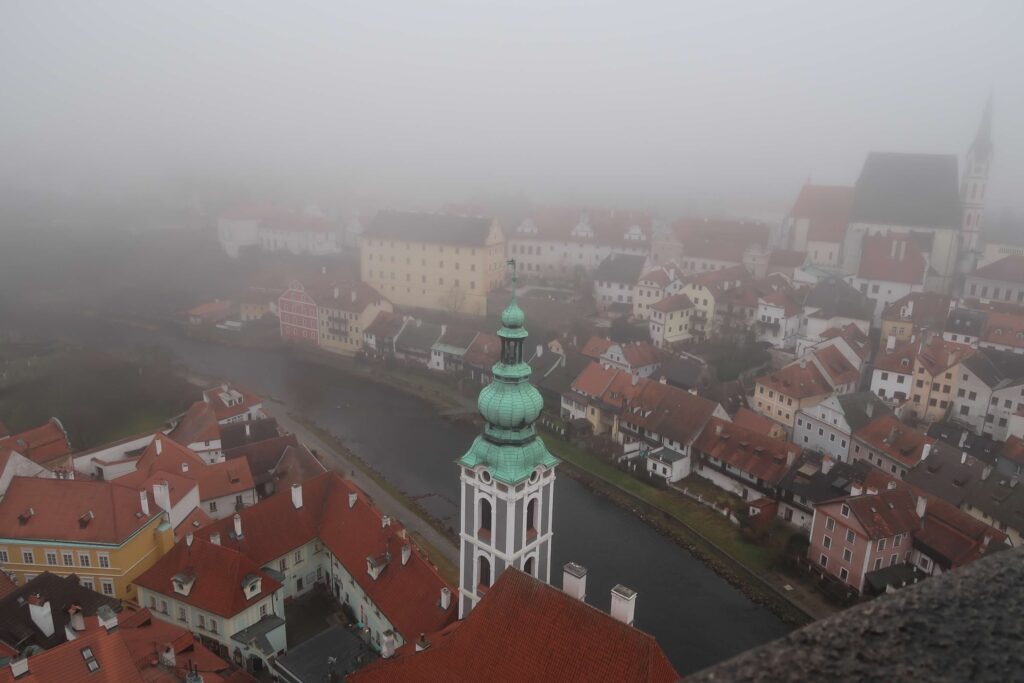





Vienna
Bike Ride
Vienna, Austria, was definitely a highlight of the trip. This gorgeous city has a lovely personality and laid-back cafe culture. Vuong and I took an e-bike tour of the city with several fellow cruisers from Australia and two guides- one from Austria and the other from Serbia. We rode through parks and saw a Ferris wheel on which you can have dinner, which was featured on The Amazing Race. After coffee, we ended our tour and regrouped at the ship.
Exploring on Our Own
Vuong and I ventured out on the subway to explore the city on our own. We got off at the Stephensplatz station, located next to St. Stephen’s Cathedral. Although it was raining and cold, the city was vibrant and alive. A massive Christmas market surrounded the cathedral. We made a quick pass through it, as we were kinda Christmas-marketed out, and found a lunch spot. The restaurant we chose for lunch was called the “Goulash Museum.” Sadly, the restaurant has since closed. We had a delicious meal here-Vuong had the beef goulash and I had pork Weiner schnitzel.
Near the restaurant was the Mozart house, a museum dedicated to the composer’s life set in one of his apartments.
We did an audio tour of the city on our smartphones and saw the “Plague Column,” built to entice God to relieve the city’s inhabitants from the plague. We happened upon a somewhat hidden cathedral, the Church of St. Peter. The sound of music drew us in. There was an opera singer accompanied by the sounds of a huge pipe organ! What an amazing experience. We sat on an ornate wooden bench and listened as her voice filled the entire space. We took in the frescoes and ornate gold decorations as we listened to the angelic sounds.
Annetta and Jeremy visited the Belvedere Palace, where they saw the original painting “The Kiss,” by Gustav Klimt.
Palais Liechtenstein
No trip to Vienna, the Capital of Classical Music, would be complete without a concert. After an early dinner, all the passengers boarded a bus for the Palais Liechtenstein. Scenic had arranged for a private concert for their guests, and this was a wonderful experience! En route, we were all enchanted by the Christmas lights reflecting on the water, and spontaneously burst into song, belting out the Twelve Days of Christmas. It sounds cheesy, but it was really a lot of fun!
The concert featured the music of Strauss, Mozart, and Beethoven. A graceful couple demonstrated the Viennese waltz to Strauss’s “The Blue Danube,” and Annetta’s new friend, Patti, had a dance with our attractive young emcee. It was a lovely cultural experience!
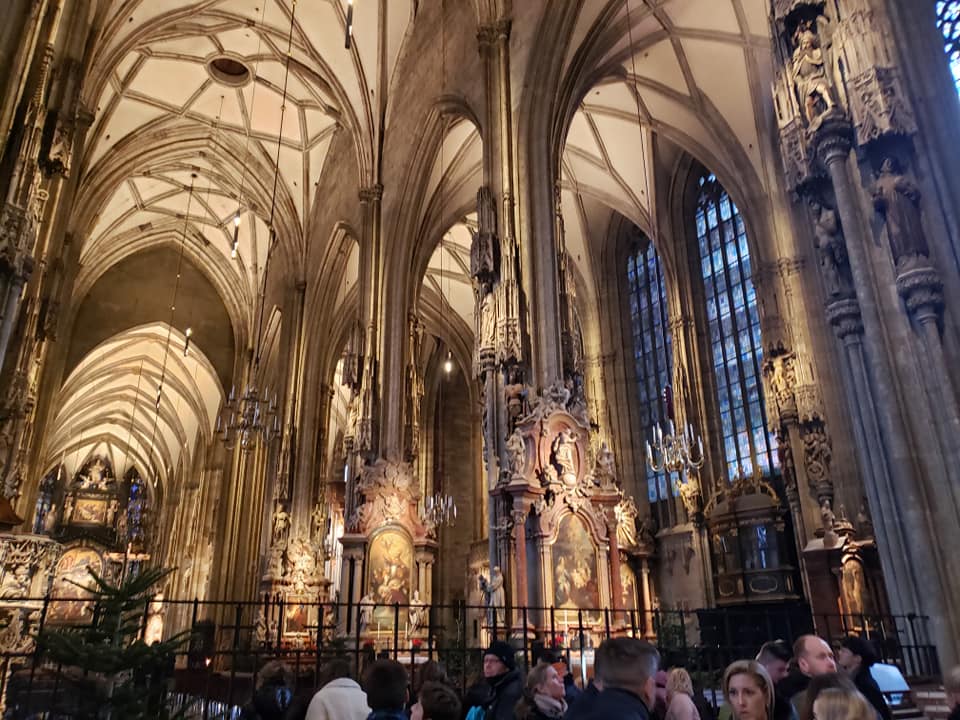
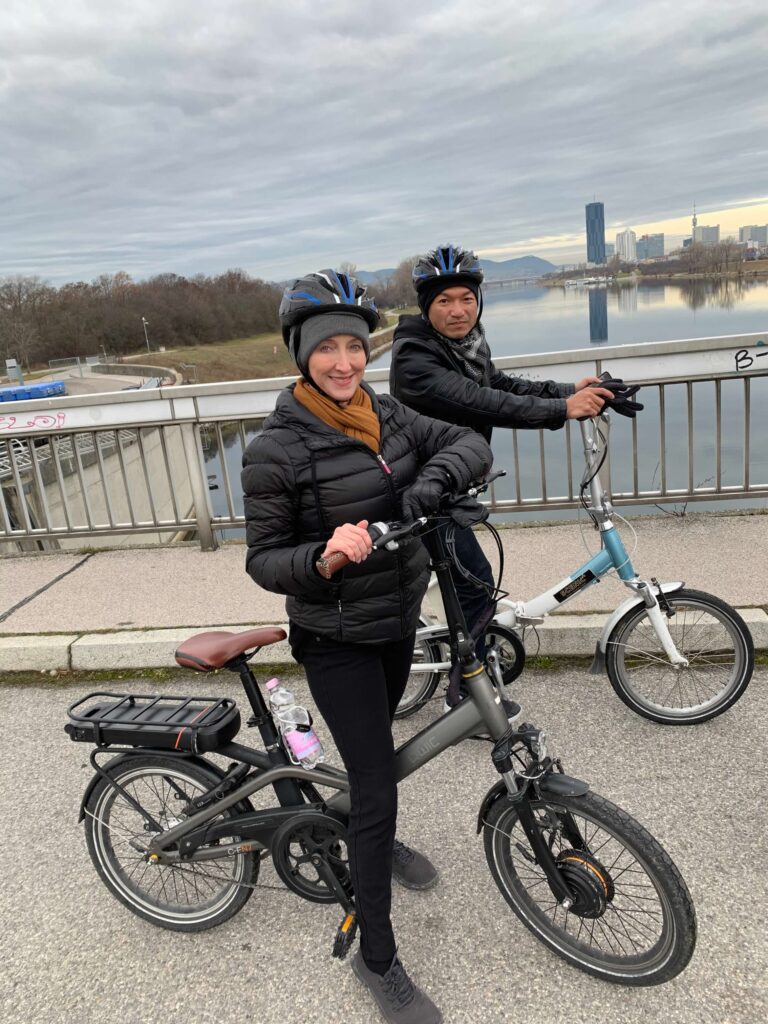
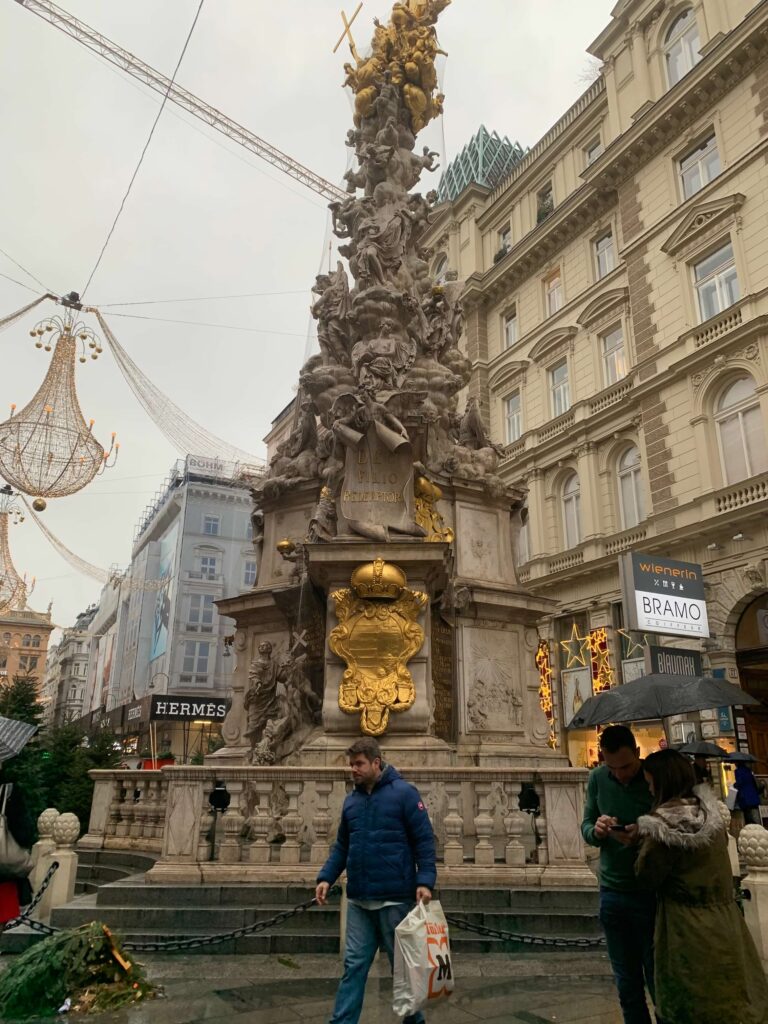
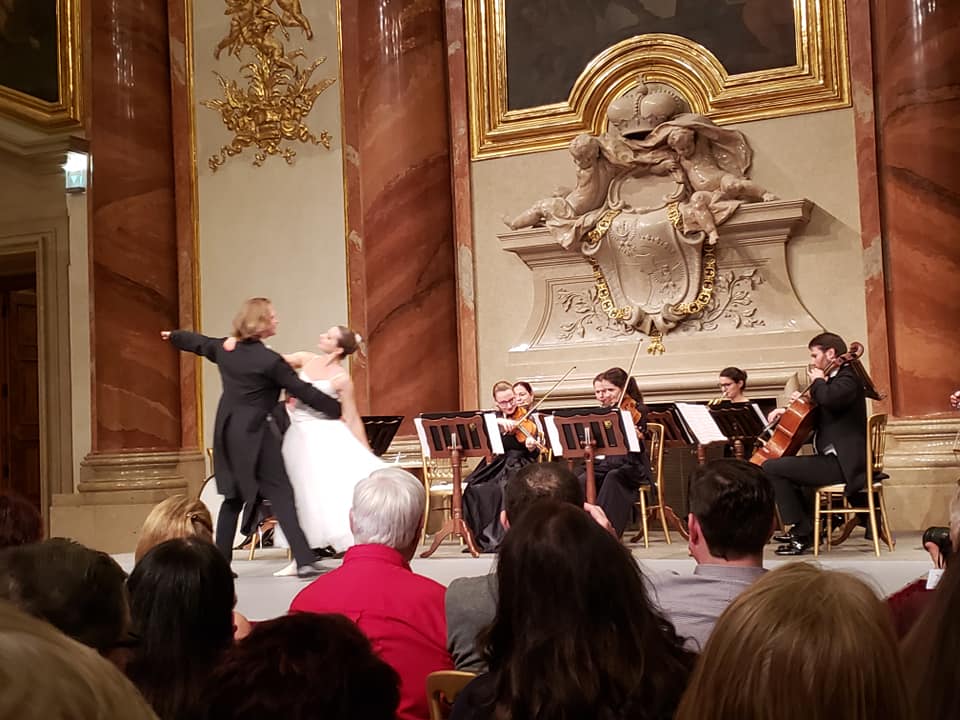
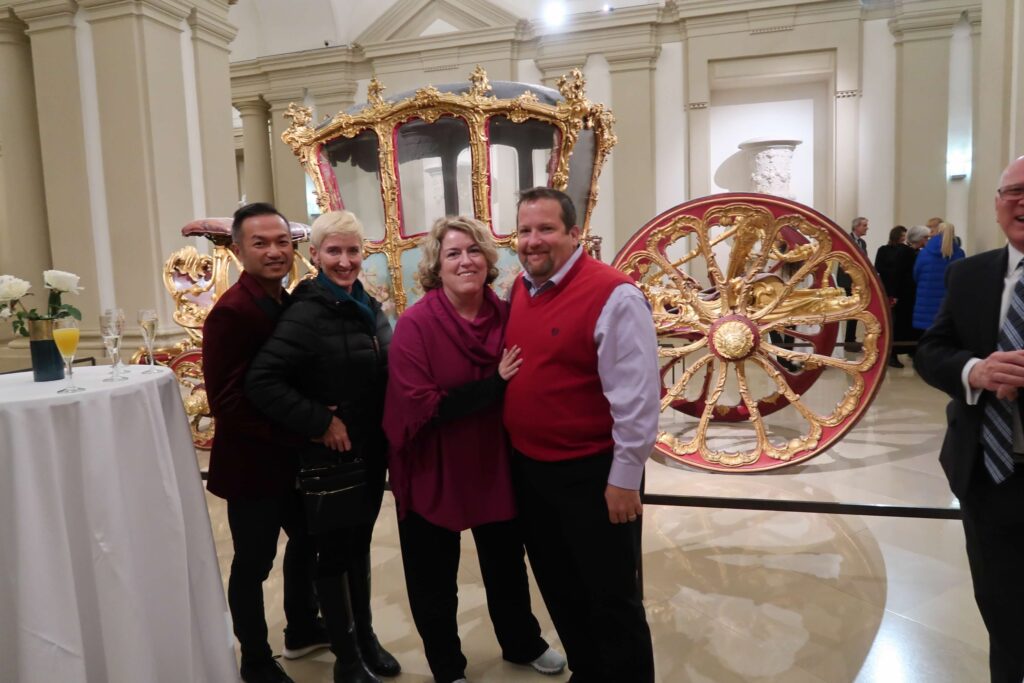
Budapest
During the night, we passed through Slovakia and could see the lights of its capital, Bratislava. We headed up to the sun deck for the approach to Budapest, Hungary.
Tour
On the right was the “Buda” side, with its castle on the hill. On the left, the “Pest” side with the stunning, grand Parliament Building. Our guide picked us up for the “Two Hills Hike,” arranged by Scenic. The two hills were Gellert Hill and Castle Hill. Bishop Gellert was a Venetian monk brought in to help convert residents to Christianity, and the statue of him at the pinnacle of his hill shows him with his foot on a pagan, defeating the savages! In truth, however, the Magyars put him in a barrel and rolled him down that hill to his death!
Buda Castle sits at the top of Castle Hill, and it is easily walkable, or you can take the funicular. The castle was home to Hungarian Kings and is now a museum and National Gallery. Around the hill is the Castle district, where you can find lots of great restaurants, hotels, and sites. Of note, the Fisherman’s Bastion is here.
A Brief History
Originally, Budapest was a Celtic settlement called “Obuda.” The Romans took the city in the 1st Century BC. In 896, seven Magyar tribes joined forces and defeated the Romans, and eventually, Obuda became two separate cities, Buda and Pest. Budapest was conquered by the Mongols, the Ottomans, and eventually the Habsburgs. The influence of all these waves of conquerors is still apparent today in the architecture, cuisine, and art of this city.
The next few centuries were a period of reconstruction, growth, and enlightenment for Budapest, technically united in 1873. A detailed account the history of this lovely city is beyond the scope of this post, but I’m just sharing a general overview.
In short, Hungary ended up on the wrong side of WWII. Anti-Jewish laws were enacted and many Hungarian Jews were deported to concentration camps, murdered by the military, kept in houses and ghettos as prisoners, and marched to their deaths. Over 500,000 Hungarian Jews died in WWII.
After the war, Hungary was under Communist rule until 1988, when the regime collapsed. It is now a Parliamentary Democratic Republic, with a President and Prime Minister.
Jewish Memorials in Budapest
Budapest has many Jewish Memorials, including “Shoes on the Danube,” which Annetta and Jeremy visited and said was chilling. There are 60 pairs of cast-iron shoes on the banks of the Danube, where Jews were ordered to remove their shoes before they were shot and their bodies fell into the river. The Holocaust Memorial Center has lots of great info, and The Emanuel Tree was donated by Tony Curtis, whose father was a Hungarian Jew. Each leaf of this weeping willow contains the name of one of the 30,000 Jews who lost their lives during the war.
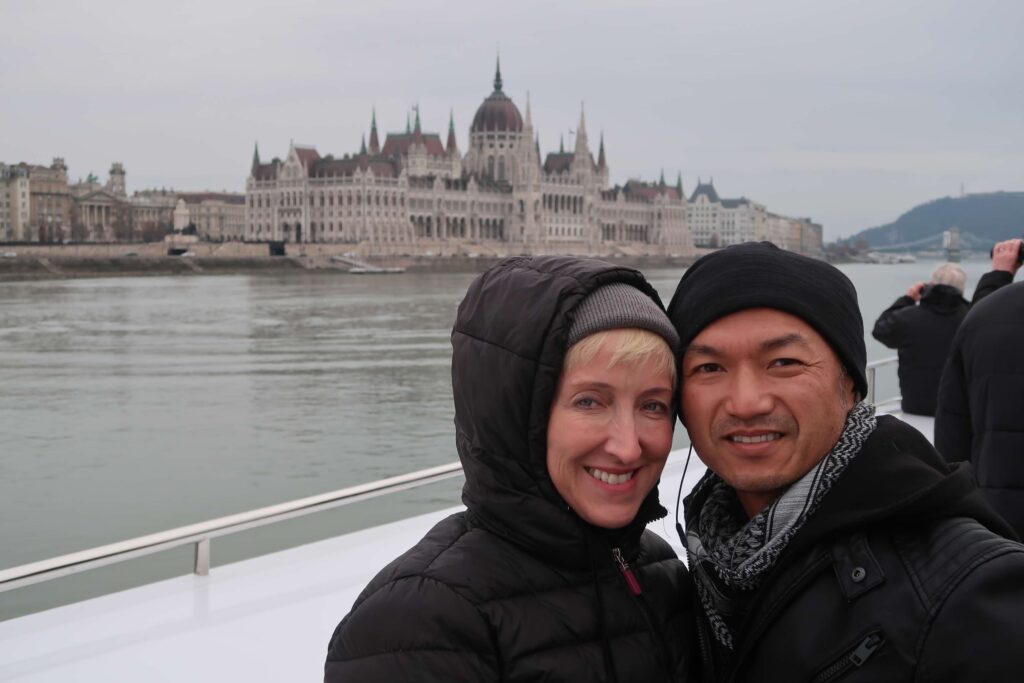
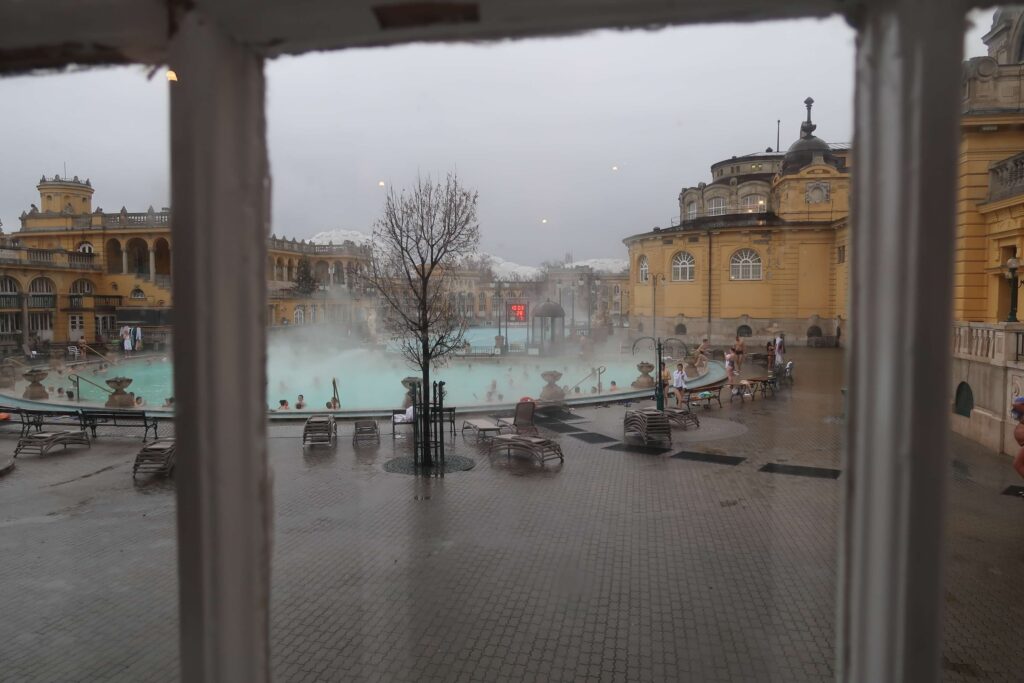


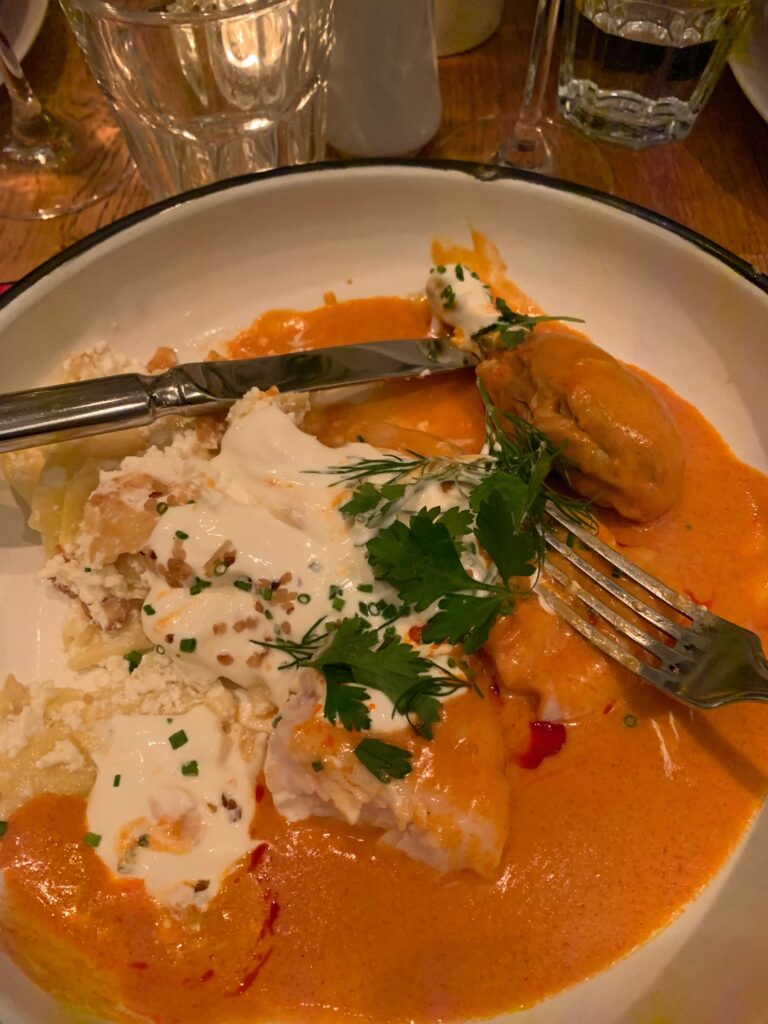
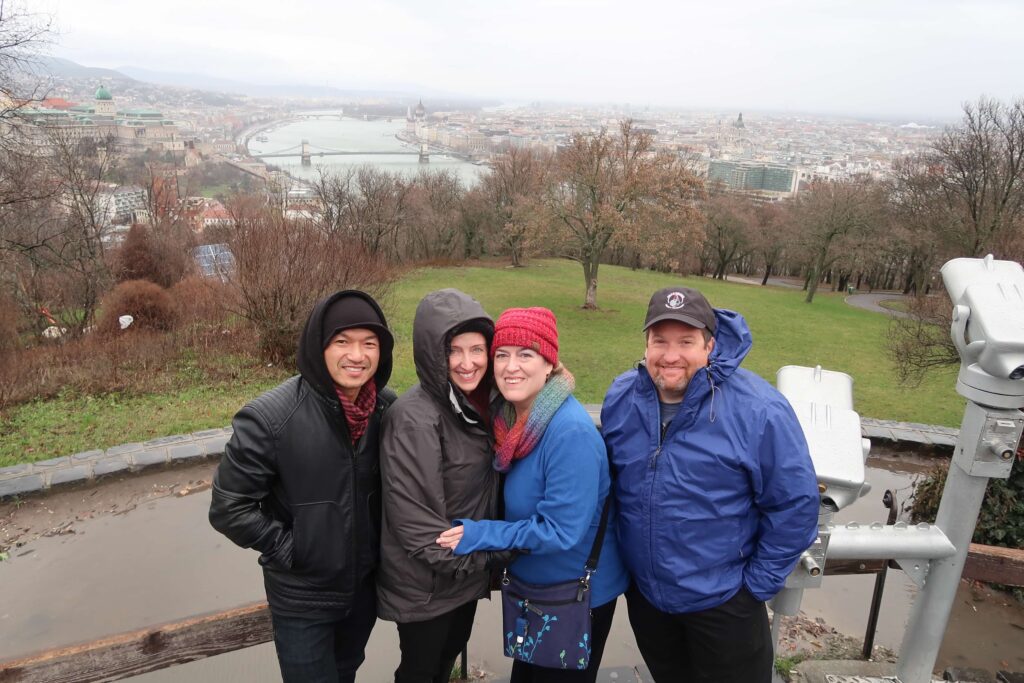
City Tour of Budapest
Castle Hill
We stayed on the “Buda Side” next to the Fisherman’s Bastion at the Hilton Budapest. Location, location, location! This hotel overlooks the Danube and the Fisherman’s Bastion and is right next to the stunning Matthias Church in the Castle District. Matthias Church is a “Notre Dame” in that it is a church dedicated to the Virgin Mary. It has persisted through history and has served as a mosque as well as a church.
Its neighbor is the Fisherman’s Bastion, which was built to commemorate the 1000th anniversary of the Magyar tribes arriving in Budapest. It looks like a Disney Castle and has an amazing view of Parliament. It looked enchanting in the evening, illuminated by amber lights reflecting off of the rain-soaked tile walkways.
We had arranged a city tour through Tours By Locals with Julia, which you can read about in detail and book here.
Pest Side
Julia picked us up in a large, comfortable black van with a driver, and we crossed over to the “Pest Side.” We drove down Andrassy Avenue, the “Champs Elysees of Budapest,” to Heroes’ Square. This was also built in 1896 to commemorate the 1000th anniversary of the arrival of the Magyar tribes, of which there were seven. Seven columns stand to commemorate the chiefs of each tribe, and there is also a “tomb of the unknown soldier,” as well as a large column. The column shows the Archangel Gabriel crowning St. Stephen as king.
In case you didn’t know- I think I learned this in elementary school and vaguely remembered, but a “tomb of the unknown soldier” is a common monument present in many countries’ national monuments to honor and pay homage to all soldiers killed in battle, particularly those who were never properly honored or identified. Typically, one body of such an unknown soldier lies here to stand for all the others. If you haven’t visited Arlington National Cemetery in Arlington, Virginia, I think you should. It is a chilling, moving experience. Manned 24/7, the guards have specific rituals and procedures they follow.
We stopped by a Hungarian bath but didn’t bathe. It was very tempting, but we didn’t have time. Budapest is also known as the “City of Spas,” not unlike Hot Springs, Arkansas which is known as “Spa City” for its hot springs. Szechenyi Bath offers indoor and outdoor pools fed by natural hot springs, saunas, and spa services. For the shy visitor, not to worry! Nudity is not permitted in public areas, so your naughty bits need to be covered!
Of course, no stop or tour on this trip would be complete without a visit to a… CHRISTMAS MARKET! This one was located next to St. Stephen’s Basilica. Annetta and I shopped at the Christmas market, while Jeremy and Vuong went inside to see the “Holy Right.” This is actually the desiccated, amputated hand of St.Stephen himself. It may seem odd, but many religions have so-called religious relics. The word relic actually means “remains.” The body parts or personal effects of a saint can be classified as relics. I’ve also seen a tooth that belonged to a Buddha in Singapore and the head of St. Catherine in Siena, Italy. Often the place housing these relics is called a “reliquary.”
Szentendre
You can reach this quaint village by train, river cruise, or private car. We drove past bland, bleak bunkers on our 30-minute drive to this town. These huge buildings had small, uniform windows and invoked a sense of despair.
The village was cobbly, but not cobbly cobbly cobbly, so we were ok. It was cold, rainy, and windy, but we persisted. We visited shops, snapped some pix, and headed to our lunch spot, Rab Raby, for some warm, fortifying, Hungarian comfort food.
Our amazing guide, Julia, recommended dishes for us. Boy were we glad we took her advice! This restaurant reminded Vuong of a Hungarian Cracker Barrel, with kitschy memorabilia and artifacts decorating the walls. Hats, antique furniture, signs, etc. were all around us. The food was warm and hearty- breaded, fried camembert cheese, Beef stew in red wine Pilis style with dumplings, and Hungarian goulash.
Pest Buda
After a long day of touring and learning, Julia recommended a traditional Hungarian restaurant in the Castle District called Pest Buda. This place really felt like grandma’s kitchen! They also have 10 hotel rooms- I would recommend staying here if you prefer to avoid the large chains. Perfect location! It is the oldest hotel in the Castle District and has been around since 1696! The Chicken Paprikash was to die for! This is a popular Hungarian dish, and Hungarian paprika makes a great souvenir. Smokey and delicious!
Final Thoughts
River cruises are very different from ocean cruises. The ships are typically smaller and the crowd older, as these trips tend to be more expensive. There are fewer onboard activities and less pool time. The food, drinks, and service are high quality and the crowd and atmosphere are elegant. They tend to be port-heavy and all-inclusive. The ride is typically smoother, but passing through locks at night can be noisy.
Cruises in general are great for groups and families, as everyone doesn’t have to do the same excursions. You can do your own thing, then come together and share stories at dinner. You have shows, casinos, activities, dance clubs, and bars- something for everyone.
It is easy to plan a cruise, you have a single room so you can unpack and settle in, while still seeing several different places. This makes cruises especially nice for older folks and those with mobility issues.
True, you don’t really get to see a place in-depth as with ground travel, but sometimes a taste is all you need! Other times, that taste can be an appetizer and leave you wanting more of that place. They aren’t for everyone, but we enjoy them! We like to do a mix of cruises and other types of travel.
With that said, Scenic Luxury Cruises and Tours was amazing and catered to our every whim. I highly recommend using them, and the Danube River Christmas Markets Cruise was a wonderful way to see several towns in Germany, Austria, Czechia, and Hungary and a great place to spend the holidays with friends new and old!
Have you been on a River Cruise? How about an Ocean Cruise? Do you love them or hate them and why? Let me know!! What did you think about our Danube River Christmas Markets Cruise? What should I write about next??

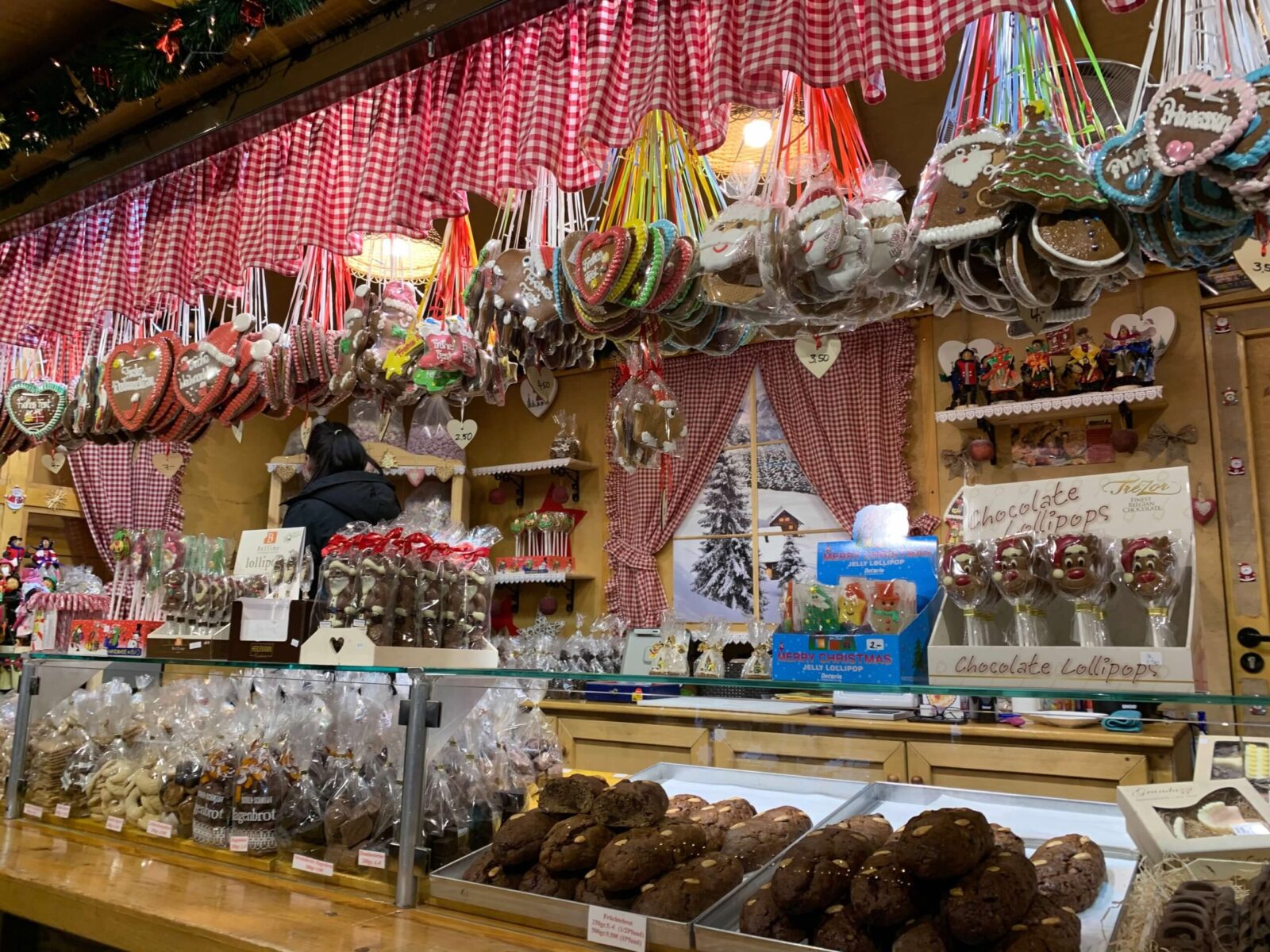
Thanks, Jen! Great info!!
Jennifer,
I think this would be the kind of cruise I might like. Not so keen on the ocean stuff. Do you have to research all the history that you so neatly weave into the travel, eating, etc. information? Great site…even though I am not an avid traveler, I really enjoy and learn about the world from your meanderings.,
Thank you so much!! Yes, I do a lot of research to make the posts as informative as possible. I usually read a bit about the history and culture of a place before we go, try to learn while we are there and write what I learn and see in my journal, then research and verify while I am writing the posts. I love learning about history while visiting a place in person- it is easier to understand and retain. LET’S PLAN A RIVER CRUISE then!! There are even Mississippi River cruises…